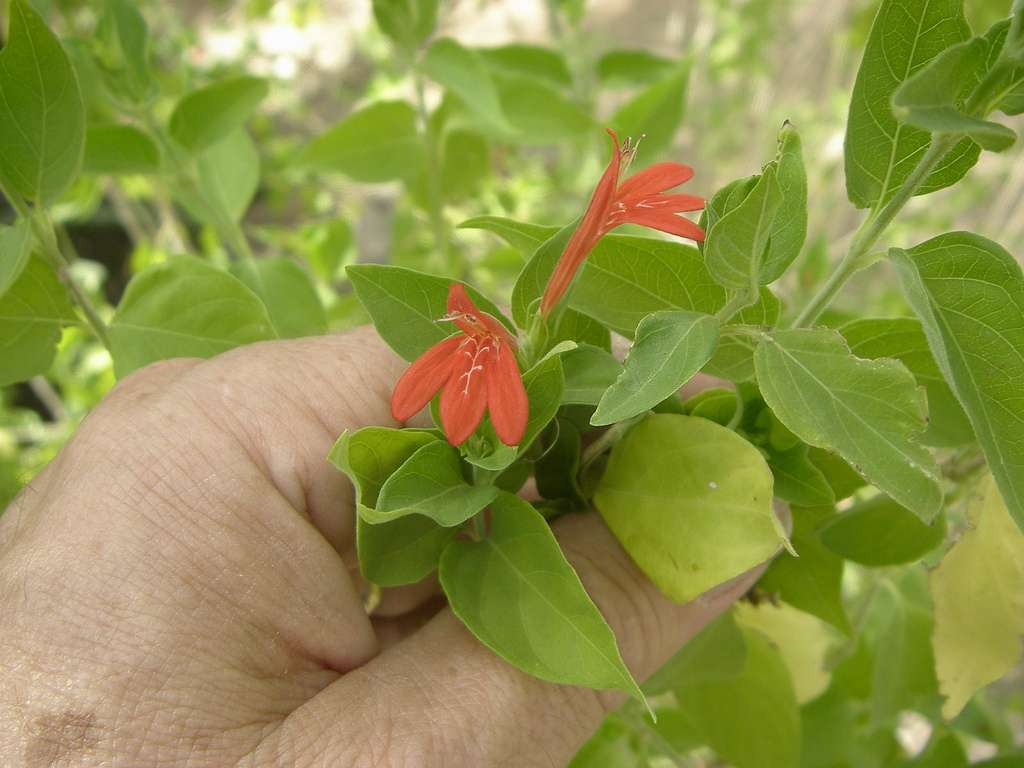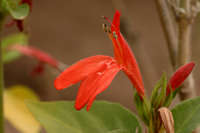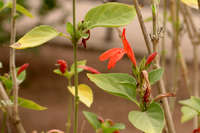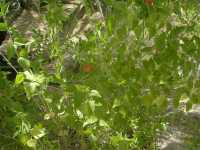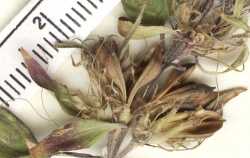|
|
|
|
Family: Acanthaceae
Arizona water-willow
[Adhatoda candicans Nees, moreJacobinia candicans (Nees) Benth. & Hook. fil., Jacobinia ovata A.Gray] |
General: Small shrub to 2 m, leafy around the inflorescence. Leaves and stem surfaces pubescent with long, visible hairs. Leaves: Leaves ovate with attenuate tips, bright green, simple, entire, opposite, and with noticeable venation on the underside of the leaf. Flowers: Flowers bright red, orange, or occasionally yellow, with an elongated corolla tube, lobes deeply divided with a large lower lip, lower lip having 3 lobes, the upper lip with 2 lobes. Throat occasionally spotted or streaked with yellow. Stamens 2, the anthers without a hard, white, pointed tip. Fruits: An elongated, club-shaped capsule 1.5-2 cm, canescent, with an inflated tip. Seeds 4, rounded, mottled. Ecology: Found in dry, sandy, soils, in washes and canyons below 2,500 ft (762 m); flowers March-June. Notes: Differentiate from J. californica by looking at the anthers; J. californica has a short, hard, white basal point on its lower anthers, this is absent on J. candicans. Also, the stems of J. californica are obscured by the dense pubescence, while J. candicans is pubescent, its stem is not obscured, and the hairs are long and visible to the naked eye. Ethnobotany: The flowers were sucked for their nectar. Etymology: Justicia is named after after James Justice (1698-1763), a Scottish botanist and horticulturist, son of Sir James Justice. He was apparently the first person to successfully bring a pineapple to the fruiting stage in Scotland, became involved in the tulip bulb craze and died bankrupt, while candicans means white. Sources: Benson and Darrow 1981, Hickman 1993, Powell 1988 Benson and Darrow 1981, Hickman 1993, Powell 1988 Duration: Perennial Nativity: Native Lifeform: Shrub General: Small shrub to 2 m, leafy around the inflorescence. Leaves and stem surfaces pubescent with long, visible hairs. Leaves: Leaves ovate with attenuate tips, bright green, simple, entire, opposite, and with noticeable venation on the underside of the leaf. Flowers: Flowers bright red, orange, or occasionally yellow, with an elongated corolla tube, lobes deeply divided with a large lower lip, lower lip having 3 lobes, the upper lip with 2 lobes. Throat occasionally spotted or streaked with yellow. Stamens 2, the anthers without a hard, white, pointed tip. Fruits: An elongated, club-shaped capsule 1.5-2 cm, canescent, with an inflated tip. Seeds 4, rounded, mottled. Ecology: Found in dry, sandy, soils, in washes and canyons below 2,500 ft (762 m); flowers March-June. Notes: Differentiate from J. californica by looking at the anthers; J. californica has a short, hard, white basal point on its lower anthers, this is absent on J. candicans. Also, the stems of J. californica are obscured by the dense pubescence, while J. candicans is pubescent, its stem is not obscured, and the hairs are long and visible to the naked eye. Ethnobotany: The flowers were sucked for their nectar. Etymology: Justicia is named after after James Justice (1698-1763), a Scottish botanist and horticulturist, son of Sir James Justice. He was apparently the first person to successfully bring a pineapple to the fruiting stage in Scotland, became involved in the tulip bulb craze and died bankrupt, while candicans means white. Synonyms: Adhatoda candicans, Dianthera candicans, Jacobinia candicans, Jacobinia candicans var. subglabra, Jacobinia ovata, Jacobinia ovata var. subglabra, Justicia candicans var. subglabra, Justicia mexicana Editor: LCrumbacher, 2011 |
|
|
|


